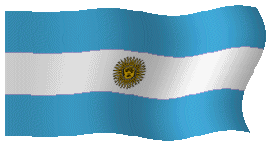
B"H
Jewish  Tours
Tours
 Buenos Aires, Argentina
Buenos Aires, Argentina
ARGENTINA, South American Federal Republic, general population (2004) 39,150,000; Jewish population 190,000.
At the beginning of the 20th century the cultural life of the Jewish community in Argentina was centered around the Jewish political parties, much as it had been in Eastern Europe. Thus, the founders of the first two Jewish libraries in Buenos Aires in 1905 – Biblioteca Rusa, and Ḥerut – had belonged to socialist organizations in czarist Russia. In addition to these libraries, cultural activities were sponsored by the Zionist organization Tiferet Sión, the anarchist group Arbayter Fraynd, and the Avangard. Another aspect of cultural life was the Yiddish theater, whose first performance was given in 1901. From that time onward, and especially after World War I, the Jewish theater became one of the central forces in Argentinean Jewish life. Its repertoire was mainly in Yiddish and the most outstanding actors in the Jewish dramatic world appeared on its stage. Individual actors and companies from Argentina visited Brazil, Uruguay, and other Latin American countries.
In 1898 the first three periodicals published in Yiddish in Argentina were Der Vider-Kol, edited by Mikhal Ha-Cohen Sinai; Der Yidisher Fonograf, edited by Fabian S. Halevi; and Di Yidishe Folkshtime, edited by Abraham Vermont. The first two publications were designed to serve as a forum for educated Jews, whereas Di Yidishe Folkshtime sought to serve the masses of Jewish immigrants and outlasted the former two by continued publication for 16 years. A host of short-lived periodicals also appeared during this period. At its end, in 1914, no less than 40 Jewish periodicals existed in Argentina. A fundamental change took place when the first daily, Di Yidishe Tsaytung, was published. The paper succeeded in overcoming its initial difficulties and presented a centrist middle-class political orientation. In 1918, a second daily newspaper, Di Prese, made its appearance. During the 1920s, Di Prese acquired a leftist orientation, which found its expression even in a change in the spelling of Hebrew words, imitating the communist transliteration. This leftist trend slackened off toward the end of the 1930s, and from the end of World War II and the establishment of the State of Israel, the paper also reinforced its ties with Zionism. Both newspapers were published until the 1970s. Other dailies were published in this period but were comparatively short lived (Der Tog, Morgentsaytung). Mention must also be made of Kolonist Kooperator, the organ of the Jewish colonists which first appeared in 1918 as a Yiddish-Spanish monthly and was published until the 1970s.
In 1913 the first attempt was made at organizing cultural activities in Argentina, and in 1915 the first conference of representatives of 25 libraries and other cultural institutions throughout the country was convened in La Plata without important results.
|
Visite nuestro sitio/Visit our home page: |